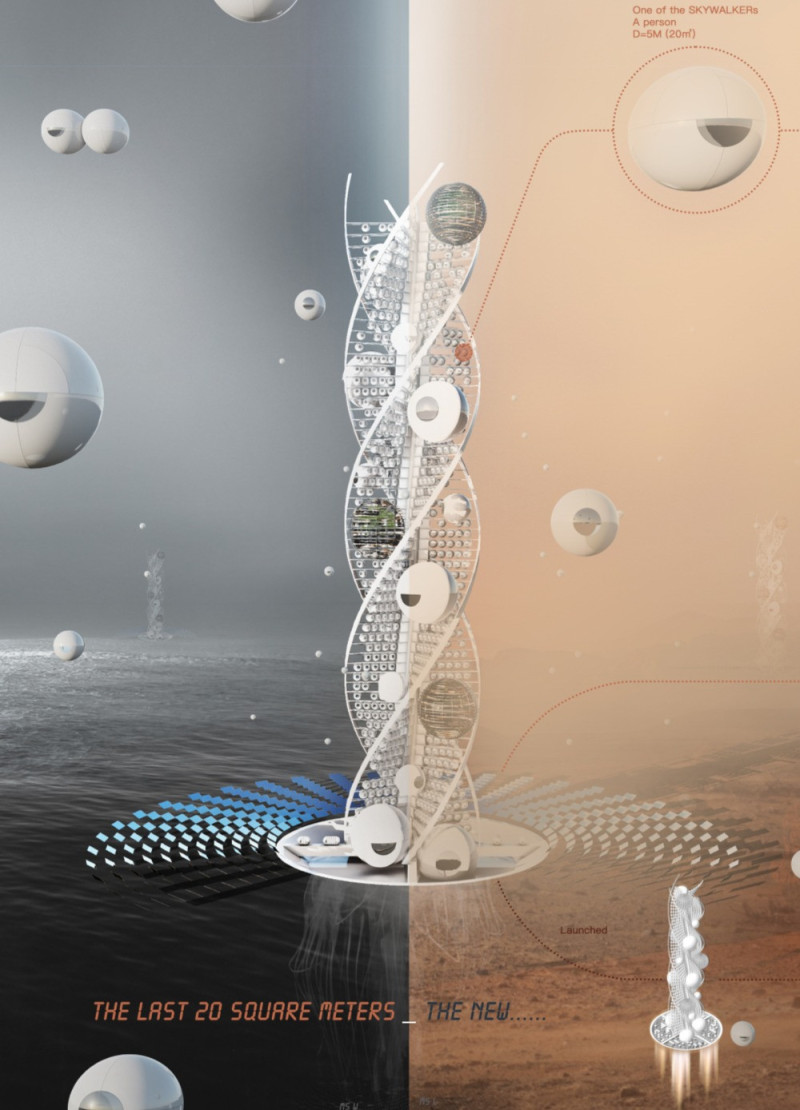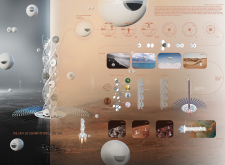5 key facts about this project
The project emphasizes adaptability and self-sufficiency, essential qualities for long-term survival in outer space. The design prioritizes a symbiotic relationship between inhabitants and their environment, integrating advanced technologies with organic aesthetics.
Modular Design and Flexibility
The project utilizes a modular architecture, allowing for flexibility in configuration and size of living spaces. The central tower, reminiscent of a spiraling DNA structure, serves as a guiding concept for growth and resilience. Surrounding this core are spherical modules that function as private living units. This arrangement promotes both community interaction and personal privacy, essential for the psychological well-being of the residents.
The modular approach offers various benefits, including scalability and easy adaptability to changing needs or environmental conditions. This aspect is crucial in the context of living on Mars, where environmental factors can fluctuate significantly. The ability to expand or reconfigure living spaces enhances the viability of long-term habitats.
Sustainable Material Selection
The materiality of the project plays a vital role in its functionality and sustainability. Key materials include lightweight composite materials, which provide structural integrity while minimizing mass for easier transportation. Transparent elements, such as glass or polycarbonate, maximize natural light within the living modules, enhancing energy efficiency and the overall living experience.
Recyclable plastics and metal alloys are strategically integrated into the design, ensuring durability and environmental sustainability. The project also incorporates vertical gardens, which support food production and air quality, reflecting a commitment to self-sustained living systems. This focus on material innovation aligns with the project’s objective of promoting a sustainable lifestyle on Mars.
The proposed habitat design is a noteworthy exploration of potential future living conditions on other planets. By blending modular architecture with sustainable practices, this design highlights a pragmatic approach to human habitation beyond Earth. For further details about the architectural plans, sections, designs, and ideas, readers are encouraged to explore the project presentation for a comprehensive insight into all aspects of this innovative architectural endeavor.























